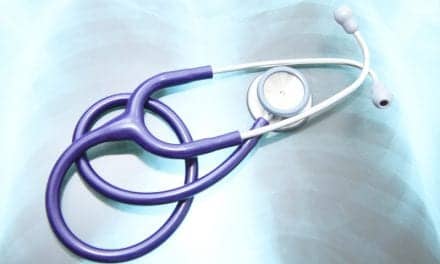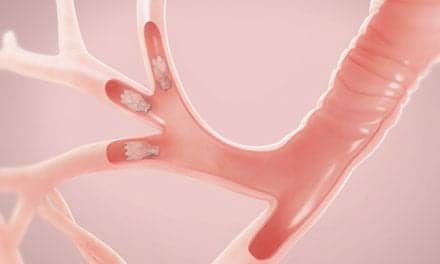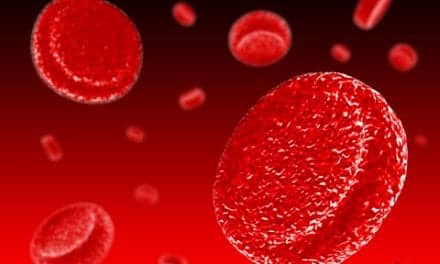In-office spirometry and pulmonary function tests play a key role in determining whether chronic lung disease patients qualify for (and benefit from) pulmonary rehabilitation.
By Phyllis Hanlon
Clinicians and therapists in the field of respiratory health often utilize in-office spirometry to assess a patient’s lung function and to diagnose a variety of respiratory conditions. Similarly, pulmonary function tests (PFTs) capture respiratory measurements that can help with diagnosis and treatment of lung disorders. Both tools play a key role in determining whether a patient qualifies for pulmonary rehabilitation.
Under the rules developed and funded by Medicare, patients must undergo spirometry and PFTs to determine appropriateness for pulmonary rehabilitation, according to Edward S. Chen, MD, assistant professor of Medicine, Johns Hopkins. He explained that for patients with chronic obstructive pulmonary disease (COPD), the condition must be moderate or severe, based on spirometry and post-bronchodilator values.
Criteria for other conditions, for example restrictive lung disease or interstitial lung disease, are not clearly defined, Chen reported. “There are not any limitations based on spirometry or PFT measures for any other referral diagnosis, other than the patient needs to be symptomatic,” he said.
Spirometry and PFTs are typically not repeated during a course of pulmonary rehabilitation, Chen noted. “In a research setting, we know many studies show benefits from pulmonary rehabilitation can be measured within weeks. If the patient is watched carefully and participates in rehab at least two or three times a week, within eight weeks there is a tangible improvement in most people.”
Chen added, “The main goal of pulmonary rehab is to get people back on their feet, more active and improve quality of life.” One related test that clinicians do repeat is the six-minute walk test (6MWT), which is a requirement of the American Association of Cardiovascular and Pulmonary Rehabilitation (AACVPR). Chen reported that the 6MWT is not directly “… tied to lung function per se, but reflects lung functional aspect and changes in exercise tolerance and endurance.”
As part of an assessment, Chen evaluates gait and stance stability before initiating an exercise program. He pointed out that some patients have mechanical issues, such as severe arthritis in knees, legs or hips; others have serious back pain. “We have to adapt an exercise prescription based on those factors,” he said. “We urge patients to try, but if they can’t perform, we move from the treadmill to the bike or stepper machine or ergometer.”
Education in Rehab
While all pulmonary rehabilitation programs are geared toward improving symptoms and quality of life, preventing exacerbations/hospitalizations, and helping with pulmonary function, they also need to be individualized for each patient to “…accurately address their needs in a multi-faceted way,” said Sara Ghandehari, MD, director, Pulmonary Rehabilitation in the Women’s Guild Lung Institute at Cedars-Sinai.
Ghandehari uses PFTs as one of the tools to identify the correct diagnosis and other variables that apply to the diagnosis. For example, PFTs would identify a patient with emphysema and clinicians would use the information to guide the patient and teach about the diagnosis, its symptoms and managing those symptoms.
“We use PFTs to guide our treatment. We can see and diagnose muscle weakness and then use that information in terms of educating the patient on the correct use of inhalers and compliance. We use the baseline assessment of the diagnosis to properly train the patient,” Ghandehari said.
Ghandehari asserted that education plays an important role in pulmonary rehabilitation. “We spend half the time learning about their diagnosis, symptoms, symptom management and coping skills. We incorporate education with regard to nutrition, weight management and anxiety and depression, which is commonly associated with lung disease,” she said.
During a two-hour rehabilitation session at Cedars-Sinai, patients spend half the time in the gym training on various pieces of equipment. The regimen is gradually increased with continual monitoring of heart rate and oxygen saturation. “The biggest part of the program is to make the patient feel safe. Many patients are afraid of training. They gain confidence so they can do things independently after the program is done,” Ghandehari said, adding that the exercise improves balance, stamina and strength.
The other half of the session is devoted to education with a focus on lifestyle changes related to diet, bad habits like smoking, compliance with medications, use of oxygen and tips for safe travel.
Ghandehari pointed out that pulmonary rehabilitation programs give patients an opportunity to ask questions, listen to advice and learn more about their disease and how to manage it. Visits to a primary care physician or pulmonologist offer a limited amount of time in which to review important issues, she noted. “When you see a patient three times a week for six weeks you have time to discuss what is affecting them,” she said.
Maintaining Gains
To maintain any gains derived from pulmonary rehabilitation, patients should continue to engage in some form of exercise once the program ends, Ghandehari emphasized. “These programs significantly help patients. They lose benefits if they stop,” she said. However, access can be a major obstacle.
Ghandehari pointed out that some patients carry oxygen tanks, which makes exercising at a regular gym challenging. “Patients need to go to a program that can accommodate [them] and has staff that watches them so they can maintain their [fitness] level,” she said. “The biggest challenge is access [to programs] and recognition from providers that pulmonary rehab will benefit the patients,” she said, adding that follow-up programs provide community, routine and guidance.
Chen reported that Johns Hopkins offers a low-cost maintenance program for patients who have completed a regular Phase 2 rehab program. “Patients may come back and use our equipment. They are familiar with the machines and the program. They have been educated about taking care of pulmonary problems we’ve observed in them. We encourage them to develop a plan during the last month of pulmonary rehab to continue to exercise at home,” he said, pointing out that several patients take advantage of Johns Hopkins maintenance program. “For them it’s the socialization aspect to a group exercise program.” Whether patients use some type of exercise equipment or opt to take walks, he urges them to continue being active.
Addressing Various Lung Conditions
UCSF Sleep Disorders and Pulmonary Rehabilitation is a moderate size clinic that treats approximately 50 pre and post lung transplant, cystic fibrosis and interstitial lung disease (ILD) patients annually in an eight-week program, according to lead clinician Chris Garvey, FNP, MSN, MPA, MAACVPR. In addition to treating patients with COPD, her clinic helps those with chronic lung disease, shortness of breath (SOB), deconditioning and mood disorders; many patients also present with several comorbidities. “We also see a trend of more patients with interstitial lung disease, idiopathic pulmonary fibrosis and pulmonary hypertension,” she said.
Furthermore, the American Thoracic Society (ATS) guidelines from 2011 recommend pulmonary rehab for the majority of patients with IPF. Patients pursuing transplant normally undergo pulmonary rehabilitation prior to surgery for several reasons, Garvey noted. “The patient does better after surgery. Pulmonary rehab helps them stay clinically stable and they have the benefit of clinician [oversight] while optimizing function and symptoms while waiting for transplant,” she said.
The UCSF clinic clarifies the goals of pulmonary rehab to patients and the referring physician, who might believe the program is designed to “fix their lungs,” according to Garvey. “An important goal is to help them use tools and behaviors that will help stabilize lung function. Severe exacerbation and pneumonia can be preventable and can also result in loss of lung function. Another important goal is to improve muscle function and functional capacity and endurance.”
While all patients must have had PFTs upon entering the rehab program, Garvey cited the accuracy of these tests as an area of importance. “ATS has standards for PFT labs, but we receive referrals from physician offices where they perform spirometry there and they may not necessarily be a pulmonary practice,” she said. “If the findings are completely different from patient presentation, we have a conversation with the physician’s office about getting full PFTs in the lab.”
Garvey pointed out that PFT administration is a sub-specialty similar to pulmonary rehab in that the person providing the testing has to be highly trained and skilled in the technical aspects of testing and guidelines. “The person must also be skilled in the ability to communicate with the patient and to get them to produce maneuvers not easy for healthy persons and quite difficult for the patient. So it takes a very unique person with technical skills to provide an accurate guideline-based test and engage the patient and get them to be part of the team,” she said, adding that nurse practitioners can order the test, if necessary. “This saves time and moves the patient along more quickly.”
Tracking Data
The market currently offers several types of spirometers, including the Pneumotrac handheld spirometer, which works hand-in-hand with ComPAS software, according to Robyn C. Frechette, national sales manger, Morgan Scientific Inc.
Like traditional spirometers, Pneumotrac measures lung function based on a patient’s efforts. The data collected goes directly into ComPAS software, which tracks and trends the information. “The software processes the information using different equations based on a predicted set chosen by a physician,” said Frechette.
Frechette added, “A spreadsheet in the software allows the user to add different data that would not necessarily be tracked, such as blood gases, pulse oximetry and exercise.” Furthermore, the software is able to interface with the patient’s electronic medical record (EMR).
To ensure that test results are accurate, thorough training is provided on the use of the device as well as effective coaching techniques. “Ideally prior to training we meet with the clinician to make sure our software is configured to meet their needs, adding in proper predictive sets,” Frechette said. “If the clinician is conducting studies or doing clinical research, we set up [the software] and show them how to use it.”
“Coaching is a big part [of the process] and explaining the test properly so the patient knows what to do is important. It’s not a natural maneuver and patients need to be taught how to do it,” said Frechette.
Ghandehari reiterated that without spirometry and PFTs a patient couldn’t begin a pulmonary rehabilitation program. “Spirometry is underutilized unfortunately,” she said. While patients and clinicians must adhere to Medicare rules regarding eligibility, duration and frequency of pulmonary rehabilitation, they face a more significant roadblock, she asserted: access to and dearth of programs.
RT
Phyllis Hanlon is a contributing writer to RT Magazine. For more information, contact [email protected].










